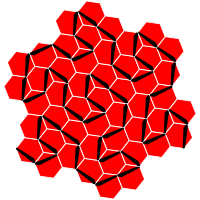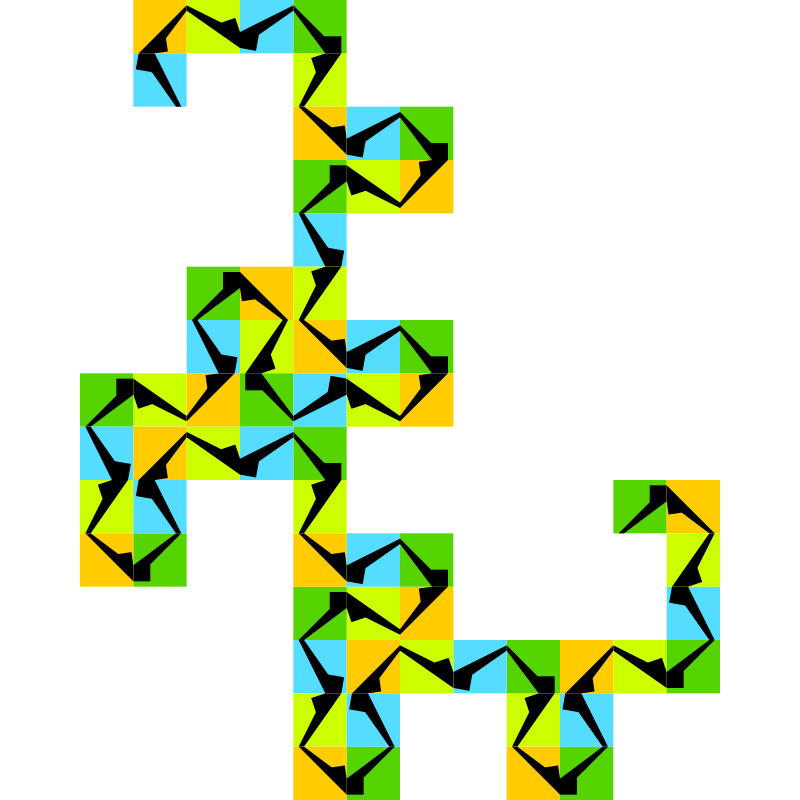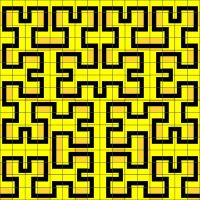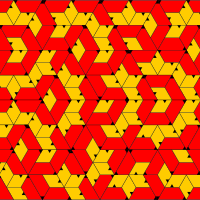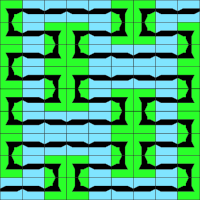Limitperiodic
A nonperiodic tiling is called limitperiodic, if it is the union of countably many periodic patterns (up to a set of zero density). It is quite easy to see that this can only be the case if the inflation factor (or a power of it) is an integer number. A tiling is limitperiodic if and only if it can be obtained through a cut and project scheme with p-adic internal space
